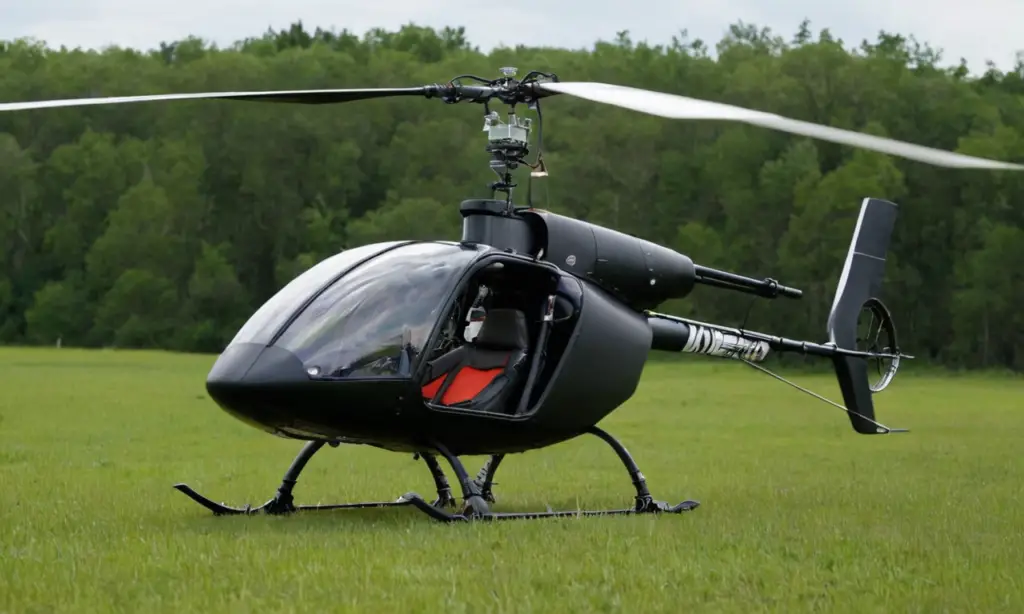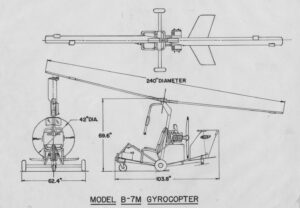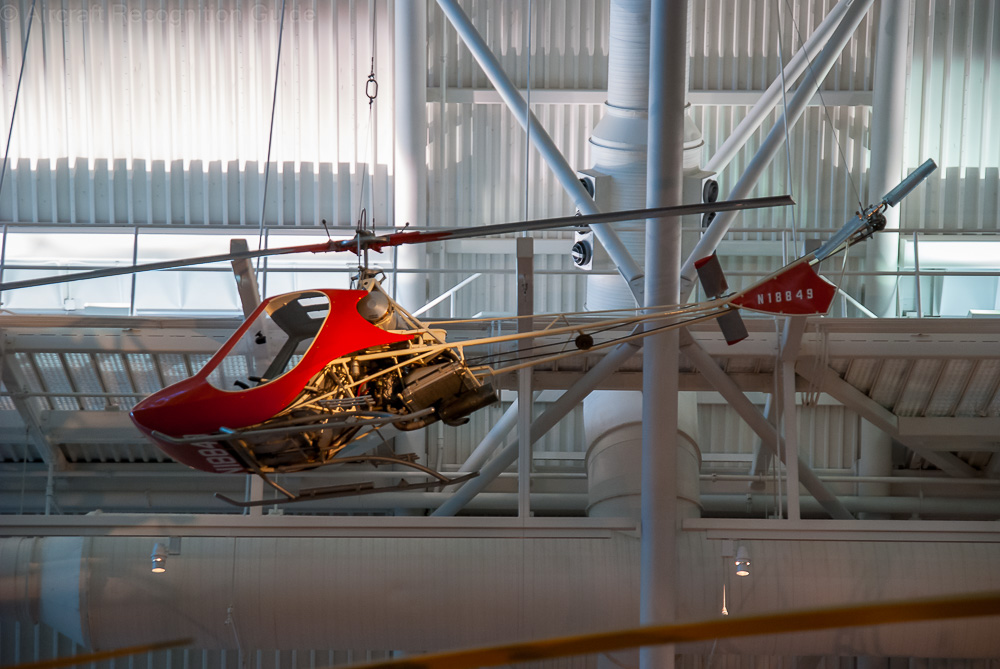Ultralight Helicopter Plans: Have you ever dreamt of soaring through the skies, experiencing the world from a bird’s-eye view? While traditional helicopters come with hefty price tags and complex regulations.
Ultralight helicopters offer an intriguing alternative. Built with affordability and accessibility in mind, these nimble machines capture the essence of flight, allowing you to explore landscapes and enjoy unparalleled freedom.
Contents
But before you embark on this exciting journey, one question burns bright: can you build your own ultralight helicopter using plans?
The answer, like the open sky, holds both possibilities and challenges. Building an ultralight helicopter from scratch demands dedication, skill, and a thorough understanding of aviation principles.
This guide delves deep into the world of ultralight helicopter plans, providing you with the knowledge and resources to make an informed decision.

What are Ultralight Helicopters?
Imagine a helicopter stripped down to its essential elements. Lighter, simpler, and more affordable, ultralight helicopters embody this very concept. These aircraft typically fall under two weight categories:
- Ultralight helicopters: Weighing less than 254 pounds empty, they require a sport pilot certificate to operate.
- Light Sport Helicopters (LSH): Weighing between 254 and 1,320 pounds empty, they necessitate a sport pilot license with a helicopter rating.
Compared to full-fledged helicopters, ultralights offer several advantages:
- Affordability: Building or purchasing an ultralight is significantly cheaper than its traditional counterparts.
- Accessibility: The simpler design and regulations make ultralights attainable for a wider range of enthusiasts.
- Fuel Efficiency: Smaller engines translate to lower fuel consumption and operating costs.
- Unique Experience: Piloting an ultralight provides a distinct, hands-on flying experience.
However, limitations are inherent to their design:
- Payload and Range: Ultralights typically carry only one person and have limited fuel capacity, restricting range and cargo.
- Weather Sensitivity: Their lighter structure makes them more susceptible to wind and turbulence.
- Safety Considerations: Building and flying an ultralight requires strict adherence to regulations and safety protocols.
Delving into Ultralight Helicopter Plans
Now that you understand the essence of ultralights, let’s dive into the world of plans. Building your own aircraft offers a unique sense of accomplishment and allows for customization to suit your needs. But where do you find trustworthy plans?
- Online Resources: Websites like Aircraft Spruce & Specialty and Van’s Aircraft offer a variety of ultralight helicopter plans.
- Aviation Publications: Magazines like Kitplanes and Sport Aviation often feature articles and advertisements for plans.
- Experimental Aircraft Association (EAA): This organization provides access to plans, resources, and a community of builders.
But remember, not all plans are created equal. Here’s what to look for when evaluating plan quality:
- Detailed Instructions: Ensure the plans provide clear, step-by-step instructions with ample diagrams and illustrations.
- Material Specifications: Verify that the plans specify readily available and high-quality materials.
- Safety Features: Choose plans that incorporate recommended safety measures and adhere to regulatory standards.
- Builder Support: Opt for plans with access to online forums, builder communities, or direct support from the designer.
Plans come in various formats:
- Digital Downloads: Affordable and instantly accessible, these require printing and careful handling.
- Printed Plans: Offer tangible reference points but can be bulky and more expensive.
- Kits: Provide pre-cut materials and detailed instructions, streamlining the building process but often come at a premium.
Remember, budgeting is crucial. Factor in material costs, tools, potential setbacks, and don’t forget to add a buffer for unforeseen expenses.

Building Your Ultralight Helicopter
The decision to build your own ultralight is not one to be taken lightly. It demands a blend of skills and knowledge:
- Mechanical Aptitude: Basic skills in welding, metalworking, and fabrication are essential.
- Aviation Understanding: Familiarity with aerodynamics, aircraft systems, and flight principles is crucial.
- Problem-Solving Abilities: Building involves troubleshooting and adapting to unforeseen challenges.
Before you take flight, safety always comes first. Here’s what you need to know:
- Regulations: Adhere to all Federal Aviation Administration (FAA) regulations regarding ultralight and light sport helicopters.
- Certification: Obtain the necessary pilot certificate or license appropriate for your chosen ultralight category.
- Inspections and Maintenance: Follow strict maintenance schedules and undergo regular inspections by certified mechanics.
Building Timeline and Process
Breaking down the build process into smaller, manageable stages helps ensure success:
- Plan Selection and Preparation: Thoroughly research and choose the right plan for your skill level and budget. Gather all necessary materials and tools.
- Airframe Construction: This crucial stage involves welding, shaping, and assembling the helicopter’s frame according to the plan’s specifications.
- Engine and Systems Installation: Carefully mount the engine, fuel system, control cables, and other essential components, adhering to safety guidelines.
- Covering and Painting: Apply aircraft fabric or other approved materials to the airframe, ensuring proper tension and weatherproofing. Finally, personalize your creation with a paint scheme as per regulations.
- Pre-Flight Inspections and Testing: Before taking flight, have your ultralight inspected by a certified mechanic and conduct ground testing to ensure all systems function properly.
- Training and Licensing: Enroll in flight training specific to ultralight helicopters and obtain the necessary pilot certificate or license.

Challenges and Solutions
Building an ultralight is not without its hurdles. Here are some common challenges and how to navigate them:
- Technical Difficulties: Seek help from online forums, experienced builders, or aviation professionals if you encounter technical issues during construction.
- Material Sourcing: Be prepared for delays or substitutions when sourcing specific materials. Research alternative suppliers or adapt your plan accordingly.
- Motivation and Time Management: Stay motivated by celebrating milestones and breaking down complex tasks into smaller, achievable goals. Allocate sufficient time and create a realistic build schedule.
Resources and Support
Remember, you’re not alone in this adventure. Here are valuable resources to support your journey:
- Online Communities: Forums like Rotorheads and Vertical Flight connect you with a network of experienced builders and enthusiasts who can offer advice and support.
- Finding Mentors: Seek guidance from experienced ultralight builders in your area. They can provide invaluable insights and hands-on assistance.
- Professional Help: Don’t hesitate to consult with certified mechanics, aviation specialists, or flight instructors for specific technical or regulatory questions.
Safety Reminder:
Never underestimate the importance of safety. Always prioritize proper training, meticulous construction practices, and rigorous maintenance. Flying an ultralight inherently carries risks, so adhering to safety protocols and regulations is paramount.
Is Building an Ultralight Helicopter Right for You?
Before embarking on this project, honestly assess your:
- Skills and Knowledge: Do you possess the necessary mechanical skills, aviation understanding, and problem-solving abilities?
- Budget: Are you prepared for the financial investment required for materials, tools, and potential setbacks?
- Time Commitment: Building an ultralight can be a time-consuming project. Are you dedicated to investing the necessary months or years?
Realistic Expectations:
Building an ultralight is an exciting prospect, but remember, it’s not a shortcut to instant gratification. Set realistic expectations, embrace the learning process, and be prepared for potential delays and troubleshooting.
The reward lies in the journey itself, the satisfaction of creating your own flying machine, and the unique experience of soaring through the skies.

Weighing the Pros and Cons
Building your own ultralight offers:
- Customization: Tailor the aircraft to your preferences and needs.
- Sense of Accomplishment: Experience the pride of creating something unique and functional.
- Cost-Effectiveness: Compared to purchasing a pre-built ultralight, building can be more affordable.
However, consider the drawbacks:
- Time Commitment: Expect a lengthy and demanding build process.
- Technical Challenges: Be prepared to overcome technical hurdles and troubleshoot issues.
- Safety Responsibility: Building and flying an ultralight necessitates strict adherence to safety regulations.
Inspiring Examples:
Many individuals have successfully built and flown their own ultralight helicopters. Their stories serve as testaments to the possibilities and rewards this endeavor offers.
Explore online communities and forums to discover inspiring examples and connect with fellow builders.
Highlighting Resources
This blog post merely scratches the surface of the vast information available. Utilize the following resources to delve deeper:
- Aircraft Spruce & Specialty: [https://www.aircraftspruce.com/]
- Van’s Aircraft: [https://www.vansaircraft.com/]
- Experimental Aircraft Association (EAA): [https://www.eaa.org/]
- Federal Aviation Administration (FAA): [https://www.faa.gov/]
Free Download Ultralight Helicopter Plan

Conclusion
Building an ultralight helicopter can be a thrilling and rewarding adventure, offering the freedom of flight and the satisfaction of creating your own aircraft, but it’s not for the faint of heart.
It demands dedication, meticulous planning, and a thirst for knowledge.
Imagine the exhilaration of soaring above landscapes, the wind rushing through your hair, and the world miniaturized beneath you. That’s the payoff. But the journey itself is equally enriching.
Mastering new skills, overcoming technical challenges, and witnessing your vision transform into a tangible flying machine fosters a profound sense of accomplishment.
However, remember, this is not a casual undertaking. Be prepared for months, even years, of commitment. Expect to navigate technical hurdles, source materials, and invest in proper training.
Safety is paramount, demanding strict adherence to regulations and meticulous construction practices. Don’t underestimate the financial commitment either.
While potentially more affordable than buying a pre-built craft, building requires significant investment in materials, tools, and potential setbacks.
Ultimately, the decision rests with you. If you possess the necessary skills, unwavering dedication, and a thirst for adventure, building your own ultralight helicopter can be an unforgettable experience.
It’s not just about the destination, but the journey itself – a testament to your passion, ingenuity, and love for the skies. So, weigh the challenges and rewards carefully.
If the spirit of adventure beckons, and the allure of the open sky resonates with your soul, then perhaps, building your own ultralight helicopter is not just a dream, but a thrilling adventure waiting to take flight.











Leave a Reply